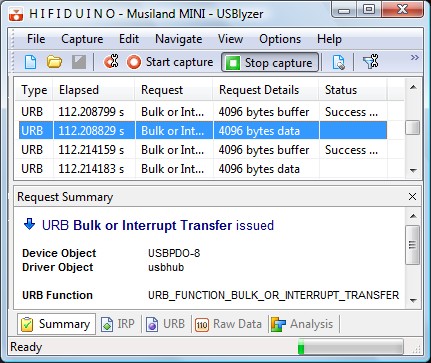As
@danadam posted (cool!) dropped USB frames would sound like a series of pops/clicks.
If you randomly flip bits and don't drop the frame, it should sound like random noise.
Each sample is a 16-bit number.
If you flip zeroes to ones in a binary number, you're changing the value of the number at random. A string of random numbers played back as audio is just white noise, so if the errors are relatively uniform, that's effectively what should happen... but depending on the timing and how the bits are flipped you probably wouldn't end up with nice steady noise, rather probably more like random drops, clicks, pops, etc.


